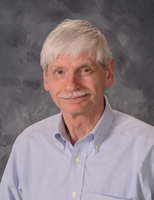Research Area(s)
- Particle Physics Theory and Phenomenology
About Me
Research Interests
Dr. Pywell is an experimental physicist in the area of Subatomic Physics: the study of the particles that make up the atomic nucleus and the forces of interaction between them. Most of his research in this area has been through the use of photo-nuclear reactions: nuclear reactions initiated by a high energy photon (gamma-ray). These gamma-rays may be created via the bremsstrahlung process using high energy electrons from an accelerator or by the back scattering of laser light from high energy electrons.
Dr. Pywell performed his Ph.D. thesis work using the University of Melbourne (Australia) betatron and the Tohoku University (Sendai, Japan) Linear accelerator (LINAC). Dr. Pywell was a staff member of the Saskatchewan Accelerator Laboratory (SAL) from 1980 until its closing in 1998. (SAL has now become the Canadian Light Source (CLS)). In that time he has also performed experimental work at the Lawrence Livermore National Laboratory (California) and Jefferson Lab. (Virginia).
The experimental program of the Subatomic Physics group at the University of Saskatchewan, Department of Physics and Engineering Physics now focuses on the new High Intensity Gamma Source (HIGS) at Duke University, North Carolina.This is being developed by theTUNL group at the Duke Free Electron Laser Laboratory.
Dr. Pywell's main experimental interests at SAL were in the following areas. Most of which have used the SAL photon tagging facility to determine the energies of the photons.
- Photonuclear reactions involving multinucleon emission. These experiments are aimed at understanding the process of absorption of photons by a nucleus. Experiments usually involve the simultaneous detection of many reaction products, using many different types of detection systems, one of which was SALAD (the Saskatchewan-Alberta Large Acceptance Detector).
- Photon scattering experiments aimed at determining fundamental properties of the nucleons; the electric and magnetic polarizabilities.
- Photo-pion production from nucleons and nuclei. This is of fundamental importance especially near the pion production threshold where the theoretical technique of Chiral Pertubation Theory allows stringent tests of QCD to be made.
Dr. Pywell has contributed significantly to the design, building and commissioning of the hardware, electronics and software for many of the experimental systems at SAL; such as the Photon Tagging Facility, SALAD (The Saskatchewan-Alberta Large Acceptance Detector), the SAL Neutron Detector, the "Fly's Eye" Segmented Neutron Detector, BLOWFISH (A large solid angel neutron detector) and various other smaller devices for specific experiments. Dr. Pywell has also been involved in the commissioning and operation of the SAL accelerator, including the pulse stretcher ring (EROS), at SAL.
Dr. Pywell's research is now concentrated on experiments at the HIGS facility at Duke University in North Carolina. These include experiments using the BLOWFISH neutron detector, to which the U of S was a major contributor. Experiments include, photodisintegration in light nuclei to probe the fundament nucleon-nucleon interaction, nuclear compton scattering to study fundamental nucleon properties of nuclei and haw they are modified in a nucleus, and direct measurement of the Gerasimov-Drell-Hearn sum rule for the deuteron to test fundamental physical law. Dr. Pywell is also a member of a collaboration developing and experiment to study time-reversal invariance using the J-PARCfacility in Japan.
Academic Activities
Dr. Pywell's most recent teaching activities have been with Physics 121.5 and Physics 111.6 General Physics courses (Calculus and algebra based general introductory physics courses), Physics 304.3, Techniques of Experimental Physics I, Physics 251.3 Special Relativity and Modern Physics and EP 325.3 Modern Physics II.
In 1997-98 he was Acting-Head of the Department of Physics and Engineering Physics and de was elected Head of the Department for two term between 2001 and 2007. He was on sabbatical leave for 1998-99 and on administrative leave for 2008-2009.
He was a member of University Council for 2004-2007 and was chair of the Council committe on Reseach, Scholarly and Artistic Work for 2005-2007.
He is a member of the Canadian Association of Physicists (CAP) and the American Physical Society (APS). He was on the CAP Council as a representative for Saskatchewan and Manitoba for 1997-99 and 2001-2003. He has been the provincial coordinator for the CAP High School Prize Exam for the years 1994-97 and 2001-present. He became a Professional Physicist in 2003.


